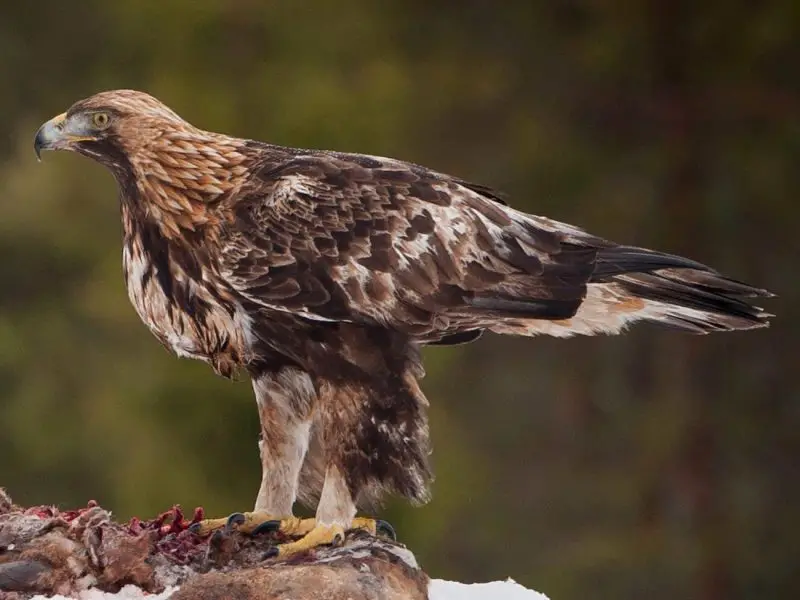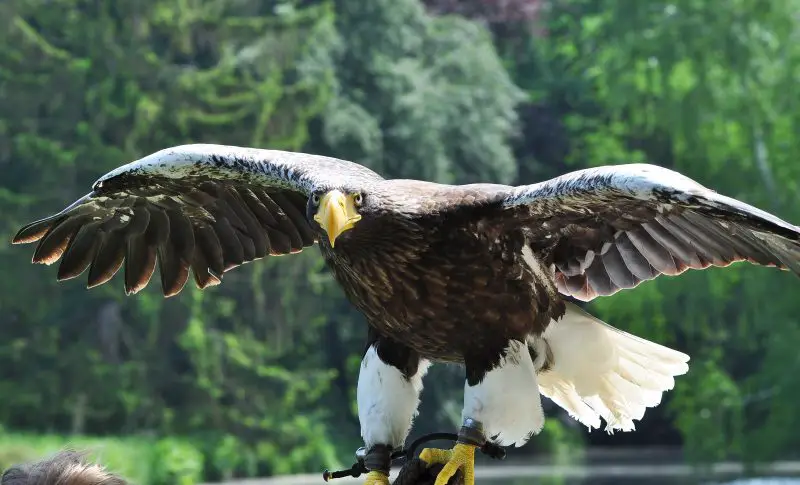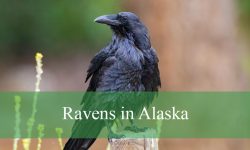Texas boasts a rich variety of wildlife, and among its most impressive inhabitants are the magnificent eagles that soar across its skies. The state is home to several distinct types of eagles in Texas that draw the attention of birdwatchers and nature lovers alike. Their powerful presence and striking features make them true symbols of the wild.
This article introduces you to the 3 types of eagles in Texas that are most commonly seen throughout the region. With detailed identification tips and clear photographs, you’ll be able to recognize these impressive birds during your outdoor adventures.
From the forests and rivers to the wide-open plains, Texas provides diverse habitats that support these incredible birds of prey. Learning about the different types of eagles in Texas will deepen your understanding and appreciation of the state’s natural heritage.
Eagles Found in Texas
Bald Eagle (Haliaeetus leucocephalus)

The Bald Eagle is the most recognizable eagle species in North America and is widely known as the national bird of the United States. In Texas, it is commonly seen during the winter months, especially near large lakes, reservoirs, and rivers. Adult Bald Eagles are easily identified by their striking white heads and tails, contrasting sharply with their dark brown bodies and wings. Juveniles lack the white coloration and appear mostly mottled brown, making them more difficult to identify until they reach maturity at around five years old.
Bald Eagles prefer habitats near large bodies of water that support abundant fish populations, their primary food source. In Texas, they are often found in East Texas and along major river systems such as the Trinity, Sabine, and Neches Rivers. While many are migratory visitors, some breeding populations are present in the state, particularly in forested areas near water. They build massive stick nests high in trees, which can be reused and added to each year, sometimes reaching over six feet wide.
A fascinating fact about Bald Eagles is that their calls are surprisingly weak for such a powerful bird—they emit a series of high-pitched chirps and whistles, quite different from the dramatic cries often dubbed over in movies. Despite being once endangered due to pesticide use and habitat loss, Bald Eagle populations have rebounded significantly, and they are now a conservation success story. Today, they continue to symbolize strength and freedom and are a thrilling sight for birdwatchers across Texas.
Golden Eagle (Aquila chrysaetos)

The Golden Eagle is a powerful and majestic raptor that inhabits the more rugged and remote parts of Texas, particularly in the Trans-Pecos region of West Texas. It is less common than the Bald Eagle in the state and is usually seen during the winter months. Adult Golden Eagles are dark brown overall with a golden sheen on the back of the head and neck. Juveniles can be identified by the presence of distinctive white patches at the base of the tail and wings, which fade as they age.
Golden Eagles prefer open landscapes like deserts, grasslands, foothills, and mountainous regions where they can soar in search of prey. In Texas, they are typically found in isolated, arid regions such as the Davis Mountains and Big Bend area. These birds are versatile hunters, preying primarily on small mammals such as jackrabbits, ground squirrels, and occasionally reptiles or birds. Unlike Bald Eagles, which often scavenge, Golden Eagles are active predators with incredible speed and aerial agility.
An interesting fact about the Golden Eagle is that it has been revered in various cultures throughout history, from Native American traditions to ancient European symbolism. Despite being a powerful raptor, it is very secretive and prefers to avoid areas with heavy human activity, making sightings in Texas quite special. Though they are not as widely distributed in the state, Golden Eagles represent one of the most awe-inspiring birds of prey in North America.
Steller’s Sea Eagle (Haliaeetus pelagicus)

The Steller’s Sea Eagle is an enormous and exceptionally rare visitor to Texas, with only one confirmed sighting in the state in 2022. Native to northeastern Asia—particularly the Russian Far East and parts of Japan—this species is not native to North America. However, one individual became a sensation in the birding world after appearing in various parts of the U.S., including Texas. This eagle is even larger than the Bald Eagle, with a wingspan up to 2.5 meters and an unmistakable appearance featuring a massive yellow bill, white shoulders, white tail, and blackish-brown body.
Because it is a vagrant, the Steller’s Sea Eagle does not have an established habitat in Texas. In its native range, it typically inhabits coastal cliffs, river valleys, and areas with abundant fish such as salmon. It feeds primarily on fish and waterfowl and often perches in trees near riverbanks or rocky shores. The eagle spotted in Texas likely followed a highly unusual and accidental migration route, straying thousands of miles from its natural range.
A fascinating and almost mythical presence, the Steller’s Sea Eagle captivated birders across the continent. It was often referred to as the “lost eagle” and drew thousands of people to wherever it appeared. Its brief and rare visit to Texas underscores both the unpredictability of bird migration and the wonder of avian wildlife. Though it may never return, the lone Steller’s Sea Eagle sighting remains one of the most exciting and talked-about birding events in recent Texas history.
Eagle Identification Tips
Size and Shape
When trying to differentiate between Bald Eagles and Golden Eagles in the field, size and shape can offer helpful clues—but it’s not always easy. Both species are among the largest birds of prey in North America and can appear very similar in silhouette. However, Golden Eagles tend to have slightly longer tails and more slender bodies compared to the stockier Bald Eagles. Their wings are also narrower and taper more gracefully toward the tips, whereas Bald Eagles have broader wings with a more rectangular shape in flight. If you’re observing from a distance, Golden Eagles may appear sleeker, especially when soaring over open landscapes.
Plumage
Plumage is one of the most reliable ways to identify these raptors—especially for adult birds. Mature Bald Eagles are iconic, sporting a brilliant white head and tail, offset by a chocolate-brown body and wings. Their large, bright yellow beaks and matching talons are unmistakable. In contrast, Golden Eagles have dark brown plumage across their entire bodies, with a rich golden hue on the back of the head and neck that shimmers in the sunlight—hence the name. Juveniles of both species, however, are trickier. Young Bald Eagles are mostly brown with blotchy white markings under the wings and on the belly, while juvenile Golden Eagles display clean white patches at the base of the tail and under the wings, which fade as they mature.
Flight Patterns
Flight behavior is another key differentiator between these eagle species. Bald Eagles typically soar with their wings held flat, like broad, horizontal planks. This posture gives them a commanding and stable appearance when gliding across water bodies or open landscapes. Golden Eagles, on the other hand, often fly with their wings in a slight upward “V” or dihedral position. They also tend to be more acrobatic in flight, frequently engaging in dives, swoops, and rolls, especially during hunting or courtship displays. Observing the angle and motion of the wings can help distinguish these majestic birds even at great distances.
Habitat
Understanding preferred habitats can significantly improve your chances of correctly identifying eagles in Texas. Bald Eagles are strongly associated with water, especially large lakes, rivers, and coastal regions. They rely on aquatic ecosystems for their primary food source—fish—and typically nest in tall trees near these water bodies. In contrast, Golden Eagles prefer wide-open spaces such as grasslands, deserts, and mountainous terrain, especially in western Texas. These birds require vast hunting grounds and are more likely to be spotted in remote or rugged landscapes far from human settlements. If you’re in the Texas Hill Country or the Trans-Pecos region, you’re in better Golden Eagle territory, while east Texas lakes are a stronghold for Bald Eagles.
Conclusion
Texas offers unique opportunities to observe these magnificent eagles in their natural habitats. From the widespread Bald Eagle to the elusive Golden Eagle and the rare Steller’s Sea Eagle, each species adds to the rich avian diversity of the state. Bird enthusiasts are encouraged to explore Texas’s varied landscapes to witness these raptors firsthand.






